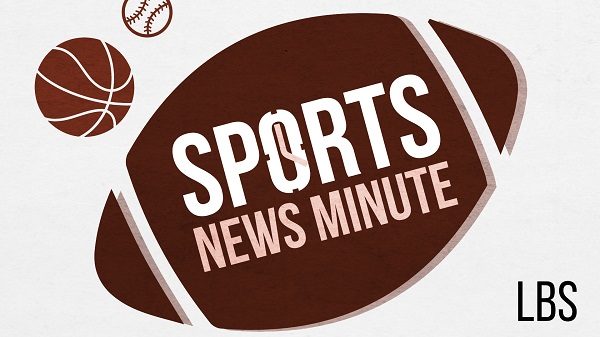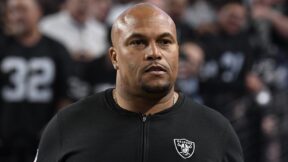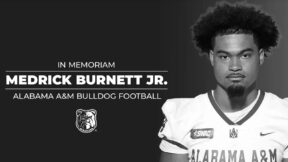History of handshakes gone wrong in sports
 I did some research on the origin of the handshake. Stop for a couple moments to absorb that statement. Perhaps you may need to lay down to fully grasp the fact that I actually did some research for once, as opposed to my usual practice of just making up facts. In all seriousness, though, modern science — or whatever you call a bunch of researchers who have nothing better to study — traces the origins of the handshake to ancient Greece, in the days before fist-bumping and Purell.
I did some research on the origin of the handshake. Stop for a couple moments to absorb that statement. Perhaps you may need to lay down to fully grasp the fact that I actually did some research for once, as opposed to my usual practice of just making up facts. In all seriousness, though, modern science — or whatever you call a bunch of researchers who have nothing better to study — traces the origins of the handshake to ancient Greece, in the days before fist-bumping and Purell.
The handshake started out as a demonstration of peace and camaraderie. Keep in mind, germaphobia was still centuries off from being used as an excuse to avoid such an action. But the handshake and its derivative, the subtle nod, have been used through mankind’s modern history as a means of well-wishing, congratulating, and to categorically avoid another person. In sports, the gesture is a symbol of goodwill and sportsmanship.
For those who notice such things — and the rest of you who are still in awe over the fact that an article is being written on the subject — athletes acknowledging their counterparts on other teams is standard practice before and/or after competition begins. In basketball, athletes extend a hand before the opening tip, while hockey players, mangled and all, lineup at the conclusion of a 60-minute game spent trying to knock each into Valhalla to offer their congratulations via a single pump of the hand, especially at the conclusion of postseason games. Football players wait until after the coin flip for mandatory spinal adjustments, before which they shake on it, gnarled as their hands may be.
Think about how important a gesture this is, and how many bad first-impressions have been formed by a weak handshake or the amount of customers frightened off by the death-grip technique that squeezes all life out of one’s appendage: Certainly, this would come into play in a sporting arena, an area where athletes make money hand over foot.
Remember, last year’s Lions-49ers brouhaha?
San Francisco head coach Jim Harbaugh came running over to his counterpart Jim Schwartz after a rather emphatic celebration of his team’s victory. Harbaugh shook Schwartz’s hand with the verve of a young Genghis Khan, then punctuated it with a back slap that nearly turned the gridiron into a reenactment of the Great Raid into the Caucasus.
The two had to be separated. The event simply became known as “The Handshake.” It nearly brought to an end a practice that predates Tom Landry’s hat-tipping. It was miles worse than one of Bill Belichick’s begrudged limp noodle offerings. A Namaste it was not.
Boxing would be the last place you would expect to see such a flap, since gloves and punching people are not very conducive to the practice of shaking hands. (Nor are brass knuckles for that matter.) In 2011, Floyd Mayweather controversially knocked out Victor Ortiz when the latter was supposedly expecting the glove touch after the referee separated the pair, apparently the boxing equivalent of a handshake. Maybe, Ortiz was confused since the first two letters of kowtow are K, O.
Anyone who follows soccer in this country — a number probably on par who with the amount of people who can accurately describe what a handshaking lemma is — will recall the recent events of the Handshake-gate surrounding Chelsea’s John Terry and Queens Park Rangers player Anton Ferdinand. Now keep in mind, the English were at the center of Victorian-era customs and are the ones we have to thank for attributing a glove-slap with the initiation of a good, old-fashioned Middle Ages duel.
Terry was alleged to have use racially insensitive verbiage in the direction of Ferdinand last season, a charge that the former continues to deny. When the two teams met for the first time this year, Terry extended his hand in a sign of good faith but was snubbed by Ferdinand.
It wouldn’t be the first snub or the last. Bayern Munich midfielder Bastian Schweinsteiger, whose name nearly requires a rhinoplasty to pronounce, snubbed German president Joachim Gauck after he missed a decisive penalty kick in last year’s Champions League final. He later apologized, stating that it wasn’t in his nature as a German to be so unfriendly to others.
Heck, even President Obama was allegedly snubbed on a trip to Russia three years ago until video evidence revealed that the charge was as believable as Vladimir Putin bringing down the Berlin Wall with a judo chop.
In fact, FIFA, the governing body of soccer, actually puts out a directive encouraging handshaking among competitors. This is quite a lofty ideal seeing how the NBA had a tough enough time getting players to dress up and apparently encouraging them to wear those geek-turned-chic glasses that have become so prevalent in postgame press conferences.
Certainly the handshake is a piece of sports antiquity: like the flying wedge, good free-throw shooters, and the Dodgers winning pennants. The pregame act still gives hope as a symbol of the benevolence and acts of goodwill that are sometimes existent in sports. The only problem is, over time the practice among athletes on the field of play has started to evolve from hand-to-hand to mano-a-jugular.







